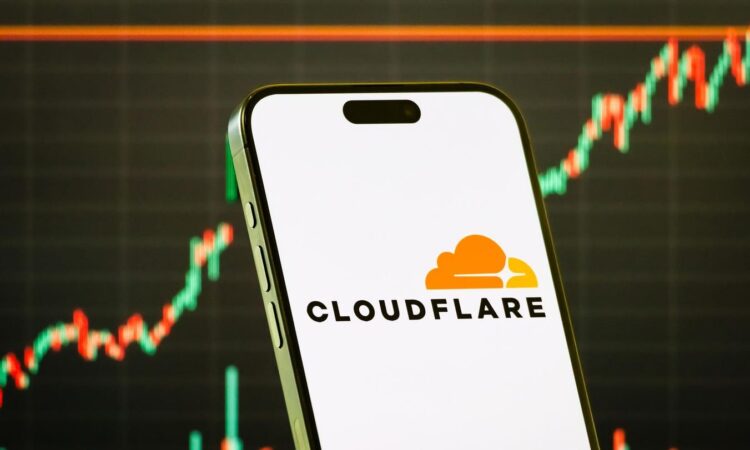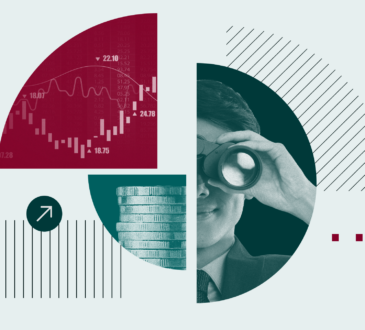
CHONGQING, CHINA – JULY 29: In this photo illustration, a smartphone displays the logo of Cloudflare Inc. (NYSE: NET), a global cloud services and cybersecurity company that provides content delivery network (CDN) and internet security services, in front of a screen showing the company’s stock market chart on July 29, 2025 in Chongqing, China. (Photo illustration by Cheng Xin/Getty Images)
Getty Images
This September 2025, Cloudflare (NYSE:NET) celebrated its 6th anniversary as a public entity. What’s remarkable is that Cloudflare’s stock is valued at around $220, which is over 14 times its IPO price of $15 from 2019. That’s impressive. What’s even better? In this timeframe, cash from operations has grown almost as quickly—from -$39 million in 2019 to almost $450 million over the past twelve months—that’s an increase of more than 13 times. There’s more to consider.
In the last twelve months, cash flow from operations grew by 26%.
However, if you’re looking for upside potential with less volatility than owning an individual stock, you might want to explore the High Quality Portfolio. This portfolio has consistently surpassed its benchmark—a mix of the S&P 500, Russell, and S&P MidCap indexes—and has delivered returns of over 91% since its inception. Additionally, check out – Opendoor- OPEN stock to $9?
Why are cash flows rising so rapidly, you may wonder?
Cloudflare’s cash flows have significantly increased in recent years due to a mix of robust revenue growth, enhancing margins, and operational leverage. The company has consistently achieved annual revenue growth of 25-30%+, while managing its cost structure more effectively, resulting in improved operating and free cash flow margins. Expansion into higher-margin sectors such as AI, edge computing, and developer platforms is further enhancing profitability, while its subscription-based cybersecurity and network services generate predictable recurring revenue. With increasing enterprise adoption, high demand for cybersecurity, and the stickiness of its platform, Cloudflare has successfully converted top-line growth into substantially higher operating cash flows, which have more than doubled over the past two years.
Cloudflare’s cash flows hold the promise of significant growth over the next few years, as strong revenue growth aligns with rising profitability. Currently, the company generates approximately $1.8 billion in revenue and around $450 million in net cash flow. If Cloudflare maintains a 25% annual revenue growth rate—similar to CrowdStrike’s pace in recent years—revenues could approach nearly $5 billion by 2030. Concurrently, operational leverage from its extensive global network should enable free cash flow margins to rise toward 40%, aligning with SaaS peers like Zscaler (NASDAQ:ZS). This projection would place free cash flow in the vicinity of $2 billion, almost 4 times the current amount.
Employing conservative peer multiples of 45-55 times FCF, this suggests a future valuation between $90 billion and $110 billion, compared to an existing market cap of around $73 billion, indicating that the stock could potentially increase by 50% from its current position. This projection is plausible, given Cloudflare’s recurring subscription base, growing demand for cybersecurity and edge services, and its leadership in AI-driven infrastructure.
The principal risk associated with Cloudflare’s stock is its high valuation, which allows little margin for error—the shares are priced significantly above peers based on both sales and cash flow multiples, meaning any decline in growth or margin expansion could prompt a sharp re-rating. Competitive pressures are another worry, as hyperscalers like AWS, Microsoft, and Google encroach into edge and security services, along with dedicated rivals such as Zscaler and CrowdStrike.
Execution risk also remains elevated as Cloudflare heavily invests in AI and new platforms that have yet to demonstrate their capability as profit generators. Ultimately, its business is sensitive to enterprise IT budgets; a decline in spending or slower adoption of its latest offerings could hinder cash flow growth, challenging the bullish argument for a 50% increase in the stock price.
Investors should brace for considerable volatility and the likelihood of significant losses if market conditions worsen or if the company fails to implement its ambitious growth strategies. While the potential for a 2x return is mathematically feasible based on anticipated revenues, it hinges on impeccable execution within a fast-changing and competitive environment. Now, we apply a risk assessment framework while constructing the Trefis High Quality (HQ) Portfolio, which, with a selection of 30 stocks, has a history of comfortably outperforming the S&P 500 over the past four years. What is the reason for this? As a collective, HQ Portfolio stocks have offered better returns with reduced risk compared to the benchmark index; a more stable investment experience, as seen in HQ Portfolio performance metrics.


